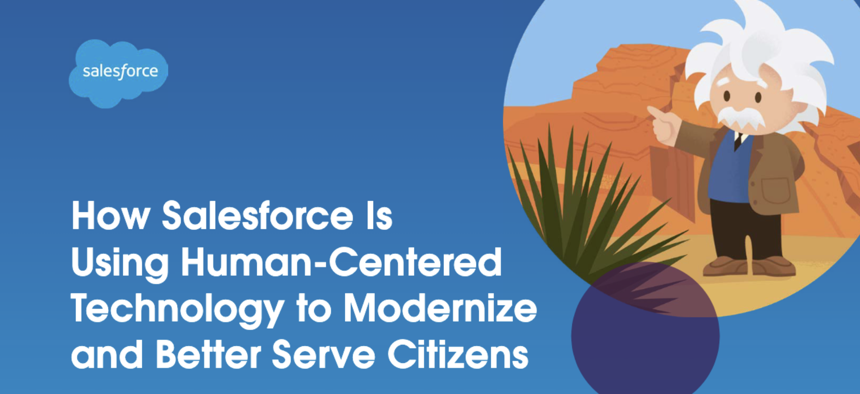Using Human-Centered Technology to Modernize and Better Serve Citizens
The mission of the medicaid-focused federal agencies is foundational to the United States’ public health care system: Ensuring over 100 million people receive and maintain medical coverage. Unfortunately, antiquated systems and manual processes often silo workflows and impede productivity, burdening hard-working employees.
Presented by
Salesforce

Understanding and Overcoming Obstacles in the Federal Health Landscape
The mission of the medicaid-focused federal agencies is foundational to the United States’ public health care system: Ensuring over 100 million people receive and maintain medical coverage. Unfortunately, antiquated systems and manual processes often silo workflows and impede productivity, burdening hard-working employees.
“What we’ve noticed is that these agencies are using multiple legacy systems leading to operational inefficiencies,” says Rinku Sinha, who serves as a Lead Solution Engineer for Salesforce. “Users are using disparate systems and applications to do one job, so they could spend anywhere from 5 to 10 minutes doing one task on one application. Those minutes add up throughout the day switching back and forth among different systems.”
As it stands now, it can take months to intake, process and complete a beneficiary application — a pace that is simply not compatible with the expanding and evolving medical needs of the public.
“Government doesn’t have time to wait to get the data that they need from older systems,” says Kristen Gratton, an account executive for Salesforce. “They should have a workflow in place to complete applications in a timely manner.”
Disparate processes don’t just waste time and resources, they also prevent employees from having a holistic view of their beneficiaries and, thus, understanding the full scope of their unique needs and challenges.
“The goal is to serve the citizen in the most efficient and beneficial way possible, and when you have a variety of siloed systems in place, from an employee perspective, there’s frustration that you can’t offer your best services and resources,” explains Gratton, who notes that this also negatively impacts the citizen. If an individual is not receiving the help they need in a timely manner, they are less likely to reach out to the organization in the future — a lose-lose situation.
In recent years, benefit-focused agencies have invested in intuitive technologies that create a streamlined experience for employees and constituents alike. This effort is in large part due to the Biden Administration’s Executive Order on Transforming Federal Customer Experience, which called for all federal agencies to “use technology to modernize Government and implement services that are simple to use, accessible, equitable, protective, transparent, and responsive for all people of the United States.”
“I think the EO is a great opportunity for agencies to put customer success above all else,” Gratton says. “A lot of agencies are moving towards recognizing that the customer experience is more than half the battle when it comes to sharing the resources that your agency has to offer.”
With such a herculean assignment on their shoulders, Gratton states that Medicare & Medicaid administrators must seek out the right tools and resources that allow them to perform at the highest capacity to create a more efficient and engaging experience for their key stakeholders — employees that are looking to provide access to tools and resources, beneficiaries that need health care, as well as the providers and hospitals that are administering the care.
This content is made possible by our sponsor Salesforce; it is not written by and does not necessarily reflect the views of GovExec’s editorial staff.
NEXT STORY: Fortify Cyber Resilience for Your Evolved Cloud



